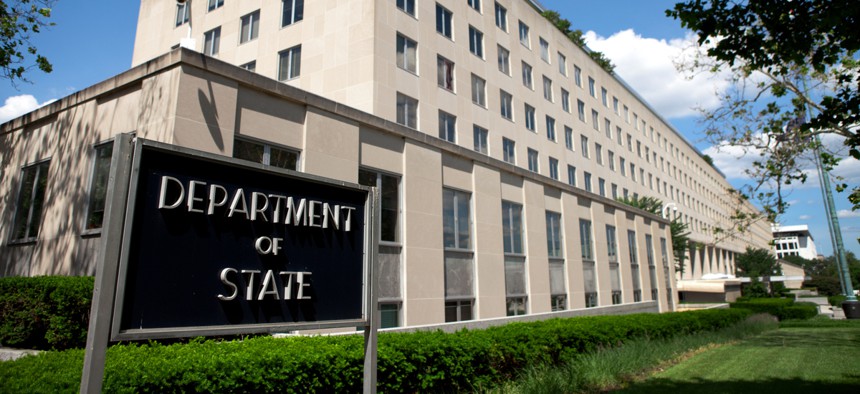State Department CIO’s Plan to Reengineer Agency’s IT Process

Mark Van Scyoc/Shutterstock.com
The shift to cloud computing and agile development hit the State Department’s “sweet spot,” says CIO Stuart McGuigan.
The State Department has a poor track record when it comes to deploying IT. But all that is about to change, according to the agency’s chief information officer, who is in the midst of reengineering the way the department does IT.
When Stuart McGuigan joined the State Department in March, he found a large organization with a multitude of missions, outposts and, importantly, technology needs. McGuigan—who came from a private-sector background managing IT for large companies—wanted to decentralize the way State viewed IT projects.
“No one has a great track record with IT projects,” McGuigan said during a talk Tuesday hosted by ACT-IAC. “That’s one of the great things about agile, and agile within the department: Technology is pivoting toward our culture and our sweet spot.”
Within the State Department, employees are trained to bring together cross-functional teams to address any given technical or diplomatic issue. For McGuigan, those same strengths define the agile IT deployment methodology.
“Between cloud—the ability to scale up, scale down—and agile, the sweet spot of tech is moving to the sweet spot of the State Department,” he said. “I see a great cultural fit.”
However, McGuigan joined the department after passage of the Federal Information Technology Acquisition Reform Act, or FITARA, and a Trump executive order both requiring department-level CIOs to take on more oversight responsibilities.
“When I came on board, they made a big announcement that the CIO is accountable, has oversight responsibility for every aspect of IT across the department—and enumerated them,” McGuigan said.
For IT employees downstream, hearing the new boss would be exercising additional oversight caused some concerns.
“The first thing I said is that oversight is not the same as operating. We’re a decentralized organization because we need to be able to put people and expertise near and close to the customer, to the problem, and we need to give them enough autonomy to get things done,” he said. “But oversight is an important concept so that we don’t do things in a fragmented way just because we do them in a federated and decentralized way.”
And so, in April, McGuigan established the IT Executive Council to ensure oversight while empowering IT managers throughout the department.
“We’ve created an oversight mechanism, we’ve created visibility across the department and we’ve created [six] working groups, which are the engine behind change and everything we do,” McGuigan said. “And everything we do will now have an enterprise perspective.”
The end-state for State is the “untethered diplomat”—a workforce that can work anywhere in any environment, whether it’s a coffee shop in Maine, an embassy in Sudan or a field outside Kabul.
“If the federal government is involved in activities overseas, the State Department is involved,” McGuigan noted. “It’s not a simple mission set. And it varies depending on what country you’re in.”
A major part of the plan is using data to identify needs and resources and ensure those needs are tracked over time. Through the data, State is able to quantify infrastructure needs, McGuigan explained—including workforce and technology—at the enterprise level while ensuring each diplomatic post and office across the globe has the resources it needs.
“If we know what apps and data and the number of people [at a given post], we can come up with and quantify the basic level of infrastructure needed to support that post end-to-end,” he said. “Whether it’s bandwidth, whether it’s mobile devices—whatever it is, we can go from mission and intent to baseline infrastructure required to support each and every post.”
“That post specifically,” he added.
With that baseline, the agency is able to pivot as needs change and justify those shifts with the data.
“We know what ‘good’ is. We know what we want to get to because we profiled what they’re trying to do,” McGuigan said. “If they change the focus in a country—they scale down, scale up, pivot—we can run that through the same machinery to reestablish the baseline. So, this is a living, breathing prioritization and planning mechanism.”






